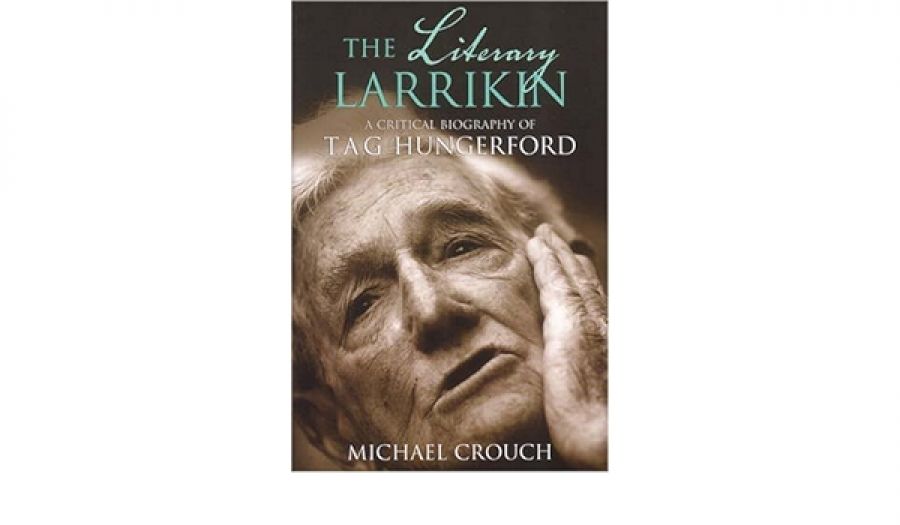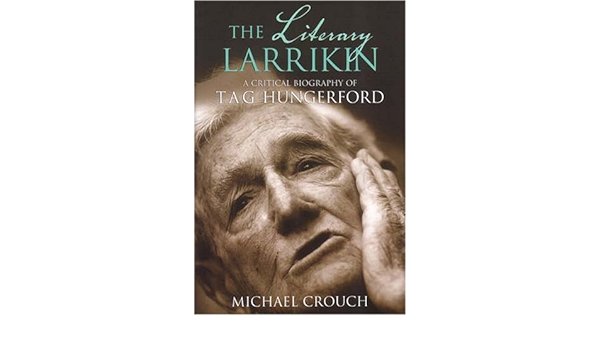
- Free Article: No
- Contents Category: Biography
- Review Article: Yes
- Article Title: More than a larrikin
- Online Only: No
- Custom Highlight Text:
The title of this biography evokes one element of Tom Hungerford’s rich and complex character, but fails to acknowledge his stature as a writer. Hungerford had long felt that he had not been given due recognition for his substantial contribution to Australian literature. Formal recognition came at last in 2003, when he was given the Patrick White Award, which was established to honour writers whose work has not been recognised sufficiently. This year, a few weeks after his ninetieth birthday, Hungerford became the Western Australian Citizen of the Year; this acknowledged his wider contribution to the community.
- Book 1 Title: The Literary Larrikin
- Book 1 Subtitle: A critical biography of T.A.G. Hungerford
- Book 1 Biblio: UWA Press, $38.95 pb, 260 pp
- Book 1 Cover Small (400 x 600):

- Book 1 Cover (800 x 1200):

Hungerford’s works include four major novels and some of the best short stories published in Australia. He has defined, in his writing, perhaps as no other Australian writer has done, four significant periods in the nation’s history. His Stories from Suburban Road (1984) and subsequent autobiographical stories capture with warmth and precision the experience of growing up in a Perth suburb in the years between the two world wars. He was, as Geoffrey Bolton comments in his introduction, ‘a major contributor to helping Western Australians to define their sense of identity in a rapidly changing world’. Despite their specific locality, the stories will remind others of their childhoods in different parts of Australia in that period.
His novel The Ridge and the River (1952) – widely acclaimed as one of the best novels about World War II – immortalised the experience of Australian soldiers in jungle warfare on Bougainville; while Sowers of the Wind (1954) is the only Australian novel to treat the postwar occupation of Japan. Another novel, Riverslake (1953), was a compassionate study of postwar immigrants at a time when Australians were learning to cope with the rapid change of their society from parochialism towards multiculturalism.
Hungerford is currently working on four novellas. Crouch asserts justly that he is ‘the last surviving Grand Old Man of Australian literature’. The biography focuses primarily on Hungerford’s life story, intertwined with comments on his writing, and falls a little short of being a satisfactory ‘critical biography’. The account of Hungerford’s earlier life is moving. Hungerford had only a limited school education, and his first substantial job was as a linotype operator; he was a good one. However, from an early age he was determined to be a writer. As with others of his generation, war service provided experiences that opened further opportunities, which led Hungerford to a public service career, as an editor at the Australian War Memorial, as a press officer for the Australian News and Information Bureau at home and overseas, and as press officer for successive Western Australian premiers, John Tonkin (whom he admired wholeheartedly) and the formidable Charles Court (for whom his admiration was more qualified). Court was a paradoxical premier. Although his pro-development policies were sometimes ruthless (the Noonkanbah incident, for example), he saved His Majesty’s Theatre from demolition and funded its restoration. He also – and this was most likely due to his admiration for Hungerford’s work as his press officer – established a fund to encourage publication of Western Australian writers’ works. This fund was instrumental in the foundation of the Fremantle Arts Centre Press.
The UWA Press’s usual editorial standards have slipped a little. For example, the young Hungerford ‘peddled his bicycle’. Of more import, the Old Barracks, substantially demolished during the Brand Liberal government, was not in Barrack Street, but at the west end of St George’s Terrace, in front of Parliament House.
A biography of Hungerford was overdue. This is a competent work, giving a balanced assessment of Hungerford’s life, character and writing. However, for me, it lacked the passion that its subject deserved, possibly because Hungerford withdrew his authorisation, limiting the author’s opportunities. For a full appreciation of Hungerford the man, go to his works. One of his late poems, ‘Sex among the tomato bushes’, illustrates his wry wit. In it, he remarks on the lack of bees and butterflies among the flowers in his garden and he sets out:
…… with never a blush of shame
playing my sly suburban pander’s game,
using the feather I saw a maggie drop
to inseminate my own tomato crop …
I brushed the gold pudenda of those flowers
with my feather. I swear it took me hours
to consummate the longest, chastest act
of love I’ve ever known. And that’s a fact.
The small green fruit are burgeoning in my wake.
It seems I’m good at what I undertake …
Indeed, Tom Hungerford, during a long life, has been good at what he has undertaken.


Comments powered by CComment